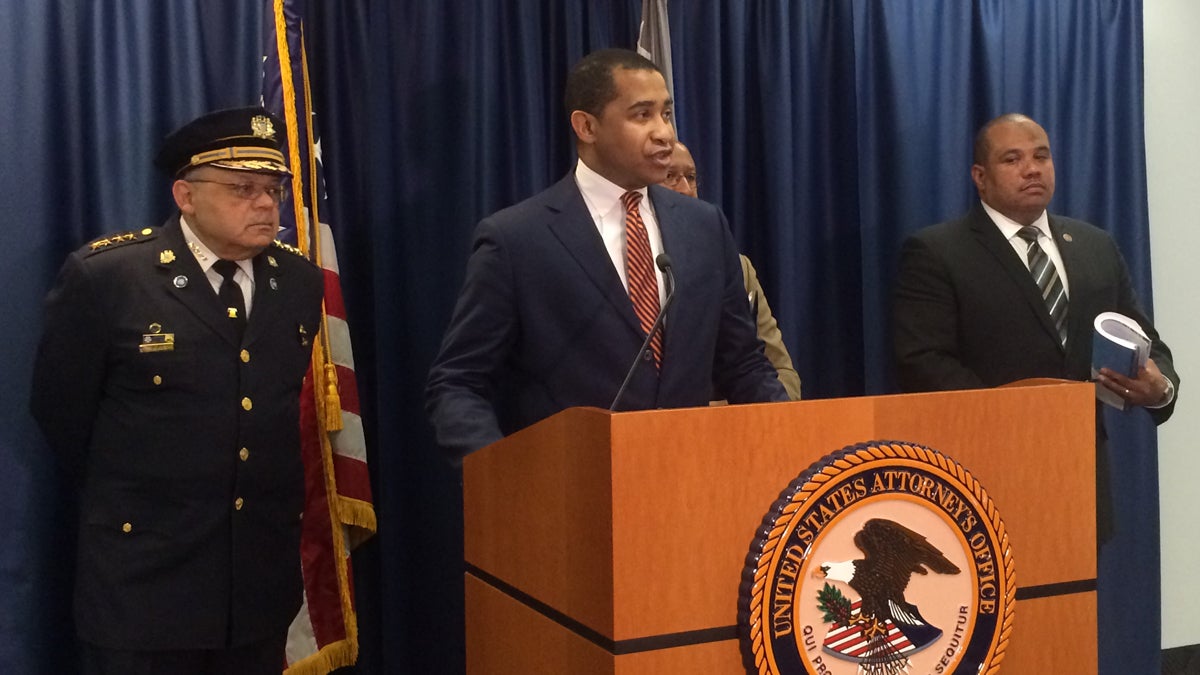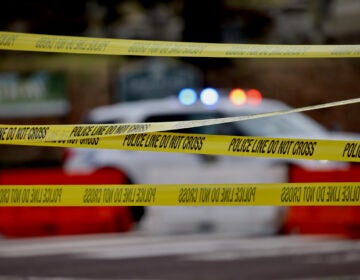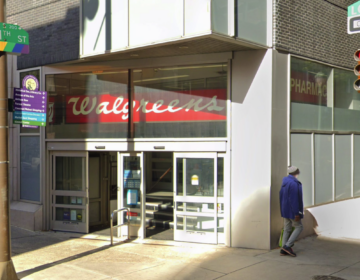U.S. Justice Dept. finds Philly police don’t get enough training on use of deadly force
Listen
U.S. Attorney Zane Memeger speaks at a press conference announcing the release of a U.S, Department of Justice report on the Philadelphia Police Department's use of force. (Emma Lee/WHYY)
Philadelphia’s police officers do not receive regular training on the department’s use of deadly force policy and many officers say de-escalation training amounts to little more than a lecture.
These are two of more than 40 findings from the U.S. Justice Department, which released a report today on cases of officer-involved shootings in the city.
Philadelphia’s police department has much work to do to mend the “undercurrent of significant strife between the community and the department,” the report found.
Between 2007 and 2014, there were 394 office-involved shootings in Philadelphia, most of them occurring in the 22nd and 25th police districts. That amounts to nearly one shooting a week. In those cases, according to the report, about 60 percent of the officers firing a weapon were white and 80 percent of the suspects shot at were black.
The report found that black suspects were unarmed about 15 percent of the time, while white suspects, though a far smaller sample size, were unarmed about 25 percent of the time. Asian suspects were unarmed in 20 percent of incidents.
Most unarmed officer-involved shootings were attributable to the perception of an imminent threat or started with a physical altercation. Philly officers perceived blacks as a threat twice as much as they did whites, even among black officers.
In nearly half of all officer-involved shootings of unarmed suspects, police misidentified a nonthreatening object, such as a cell phone, or a nonthreatening movement, say reaching toward the waistband as if about to grab a weapon, to be a legitimate threat. Toy guns were mistaken for the real thing in about 10 percent of cases examined.
Ramsey said the department has some work to do.
“Listen, we contacted DOJ. I knew it wasn’t going to be a report coming out talking about how great the Philadelphia Police Department is in every aspect of its operation.
One major problem, according to the report, is that Philadelphia officers are not regularly updating their gun training qualifications. Some officers could go nearly two years between gun training updates.
“This is not sufficient,” the report concluded. Poor accuracy is likely a result of this lack of training. Between 2007 and 2013, officers hit their intended targeted just 18 percent of the time.
In dozens of interviews with officers, federal officials found that most Philly police believed that sensing a “fear for my life” was enough to justify using a weapon in an altercation.
Besides lectures on the use of force, there is little in the way of guidelines and solid plans detailing use of force policies, the report concluded. Officers are required to complete a 20-question multiple-choice exam on the use of force at the end of their annual firearms qualification.
But the report urged more training.
“It is essential that the department train its officers on use of force policies more thoroughly. Instructors should train students not only when and how to use force, but when and how not to use force and to de-escalate, verbally and tactically, if appropriate.”
Officers should spend at least two hours a year discussing the department’s use of force policy, the study recommended, and that training should be applied to real-world case studies in a classroom setting.
Though training was lacking, the report didn’t find racial bias to be a factor in officer-involved shootings. Eight out of ten shootings victims were black, and most of the time, they were shot by white officers.
When asked about the racial breakdown at the press conference, Ramsey responded.
“In case you didn’t notice, I’m black myself. So I’m not real proud of the fact that we have a disproportionate amount of crime happening in African-American communities. But I don’t think it’s so shocking. We need to lower all the numbers folks need to quit killing each other.”
The report is the result of Commissioner Charles Ramsey asking the Justice Department to dig into the Philadelphia department’s practices around officer-involved shootings in the wake of a steep rise in the number of fatal, police-involved shootings in 2012.
In the past two years, however, Ramsey has presided over a historically low homicide and violent crime rate, dovetailing a nationwide decline in homicides and violent crime. Ramsey has said that data-driven policing and more foot patrols in crime-ridden communities explains the improved safety.
DV.load(“//www.documentcloud.org/documents/1691682-an-assessment-of-deadly-force-in-the.js”, {
width: 600,
height: 800,
sidebar: false,
text: false,
container: “#DV-viewer-1691682-an-assessment-of-deadly-force-in-the”
});
An Assessment of Deadly Force in the Philadelphia Police Department (PDF)
An Assessment of Deadly Force in the Philadelphia Police Department (Text)
WHYY is your source for fact-based, in-depth journalism and information. As a nonprofit organization, we rely on financial support from readers like you. Please give today.




